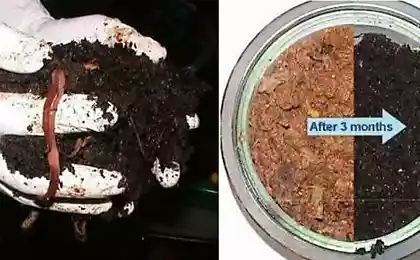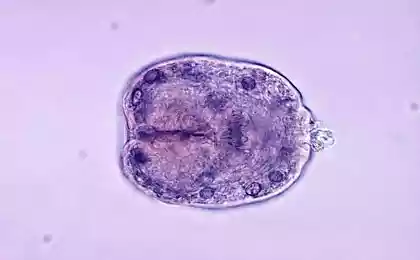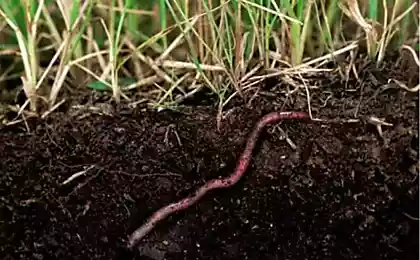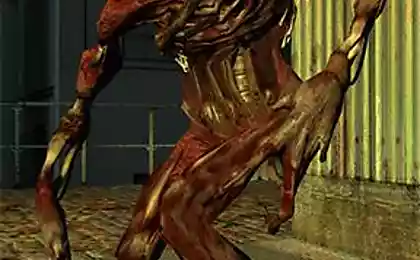459
Solve the mystery of the glow worms Siberian

Deciphered the structure of the new luciferin component of a bioluminescent system of luminous worms that live in the forest in the vicinity of Krasnoyarsk. This is the eighth known luciferin. Its structure was able to decipher researchers from the Institute of Bioorganic chemistry RAS (Moscow) and the Institute of Biophysics of Siberian branch RAS (Krasnoyarsk). The opening of the "eighth formula of the world" and also began the study of Fridericia heliota luciferase and the peculiarities of the new bioluminescent system scientists closer to understanding the mechanisms of efficient conversion of energy of chemical bonds in the light quanta. The path to deciphering the "eighth formula of the world" was a complex and non-trivial. The results were published in the prestigious scientific journal Angewandte Chemie.
Bioluminescence – the phenomenon of emission of light by living organisms. Glow, for example, beetles (fireflies), bacteria, corals, jellyfish, mollusks, worms, mushrooms, fish and other organisms. Education quanta of light occurs due to chemical reaction of oxidation of small organic molecules, luciferin under the action of oxidizer (oxygen of air) and a special enzyme – luciferase. The real work was well-known structure of only seven natural luciferin, the latter of which was deciphered more than a quarter century ago.
The phenomenon of bioluminescence has been widely practical application. Ecologists use it to monitor the environment, medicine and pharmaceuticals bioluminescence is used for clinical tests and in test systems for drug discovery. In biochemical studies of bioluminescence is used to visualize physiological processes in cells and whole organisms, and for determining various analytes, primarily ATP. In genetic engineering research the most reliable method to "see" the job of a protein "to sew" to it luciferase and add to the cells the luciferin.
In 1990, the staff of the Institute of Biophysics SB RAS Valentin Petushkov and Rodionova, Natalya were found in the forest in the vicinity of Krasnoyarsk a new species of glowing worms that got a Zoological name Fridericia heliota. It is a small soil worms (body weight less than 2 mg), which in response to mechanical stimulation emit bluish-green light.
2000 was the first study of properties of new bioluminescent system: selected components – luciferin and luciferase. To produce the required amount of biomaterial required to manually select from the soil and process several hundred thousand worms!
In 2011, the work received the support of "megagrant" of the Russian Government. The project was headed by an outstanding scientist for many years studied the phenomenon of bioluminescence, the Nobel prize winner Osamu Shimomura. At this stage work has been joined by a team from the Institute of Bioorganic chemistry from Moscow – a Group of synthesis of natural compounds under the leadership of Ilya Yampolsky, as well as the staff of the Laboratory of biomolecular NMR-spectroscopy Maxim Dubin and Kirill Nadezhdin.
In 2013, the joint efforts of the specialists in organic synthesis and nuclear magnetic resonance (NMR) was established the structure of the new luciferin, using a record small quantity of the substance (5 micrograms – so much was able to extract from biomass of earthworms collected over several years). It turned out that the luciferin is an unusual peptide, "assembled" from the residues of the amino acid lysine, an unusual amino acid derivative of tyrosine, and also oxalic and gamma-aminobutyric acids. The proposed structure was confirmed by complete synthesis: synthetic luciferin was completely isolated from identical hearts.
Outdoor luciferin Friericia heliota has chances to occupy a niche in the field of applied bioluminescence: it is simple in chemical synthesis, exceptionally stable (retains its activity for months in solution) and, unlike the luciferin of bacteria is not toxic.
"For the first time, Russian scientists made a discovery in the world of bioluminescence – region, where for the last 25 years, there has been a lull in the identification of new areas of research. The breakthrough was made possible by grant support, providing not only funding, but also the cooperation of scientists of different specialties in a single temporary group. Deciphering the structure of the new luciferin – a great result for our group. But it's not the end of the study, but only the beginning of a huge hard work, is now in a competition," says project Manager Ilya Yampolsky.
The main direction of further studies of the group – the establishment of the amino acid sequence and recombinant production of the new F. heliota luciferase, the enzyme that catalyzes the bioluminescence reaction. It is also planned to set the path of the biosynthesis of luciferin, select all responsible enzymes and their encoding genes. In the long term this will allow to transfer the bioluminescence of worms in another eukaryotic organism.
Source: nkj.ru























